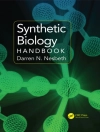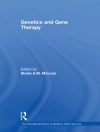Facial nerve surgery inevitably leads to partial pareses, abnormally associated movements and pathologically altered reflexes. The reason for this ‘post-paralytic syndrome’ is the misdirected reinnervation of targets, which consists of two major components. First, due to malfunctioning axonal guidance, a muscle gets reinnervated by a ‘foreign’ axon, that has been misrouted along a ‘wrong’ fascicle. Second, the supernumerary collateral branches emerging from all transected axons simultaneously innervate antagonistic muscles and cause severe impairment of their coordinated activity. Since it is hardly possible to influence the first major component and improve the guidance of several thousands axons, the authors concentrated on the second major component and tried to reduce the collateral axonal branching.
Inhoudsopgave
Outline of the General Neurobiological Problem.- The Perikarya Which Support Axonal Regrowth are Hyperexcitable.- Axonal Regrowth is Compromised by Ephaptic Cross-Talk Between the Branches.- Biological Significance of Axonal Branching.- Role of Cytoskeleton Reorganization During Axonal Branching.- The Individual Guidance Cues Promoting Reinnervation of Original Targets are Still Unknown.- Conclusion.- Outline of the Clinical Problem.- Questions Still Open.- Methodological Approach.- Materials and Methods.- First Set of Experiments: Attempts to Reduce Collateral Axonal Branching by Alterations of the Trigeminal Input to the Facial Perikarya.- Second Set of Experiments: Attempts to Reduce Collateral Axonal Branching at the Lesion Site.- Results.- First Set of Experiments: Influence of the Altered Afferent Input to Axotomized Facial Perikarya on the Quality of Reinnervation.- Second set of Experiments: Attempts to Reduce Collateral Axonal Branching at the Lesion Site.- Discussion.- The Combined Approach to Evaluate the Quality of Peripheral Nerve Regeneration.- Sensory-Motor Integrity as A Factor for Motor Regeneration.- Collateral Branching Versus Terminal Sprouting of Axons.- Prospects for the Future.- References.- Subject index.












